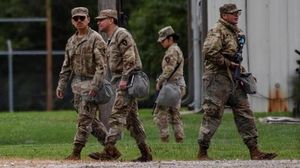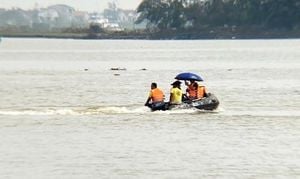After five monumental days soaring through the cosmos, the Polaris Dawn mission aboard SpaceX's Dragon capsule returned to Earth, splashing down off the coast of Florida early Sunday morning. This groundbreaking mission made history by conducting the first commercial spacewalk featuring private citizens, paving the way for future endeavors beyond our planet.
Mission Commander Jared Isaacman, along with his crew of three, embarked on their voyage from the iconic Kennedy Space Center. Their adventure took them higher than any previous human mission since the Apollo lunar landings. They achieved altitudes of 875 miles, which is over three times the height of the International Space Station, and ventured deep enough to traverse the Van Allen radiation belt, known for its extreme dangers.
Isaacman, who is also the founder of Shift4 Payments, shared his excitement after the capsule safely touched down at 3:37 am (0737 GMT). He noted, "We have completed our mission," as the crew was welcomed back by SpaceX recovery teams attempting their latest splashdown operation near the Dry Tortugas, bringing new meaning to the term "private astronaut."
Among the crew was SpaceX engineer Sarah Gillis, who joined Isaacman on the historic spacewalk. Traditionally reserved for trained astronauts, the spacewalk marked a monumental shift as Isaacman became the 264th person ever to leave the confines of their spacecraft and float among the stars since the first spacewalk by the Soviet cosmonaut Alexei Leonov back in 1965.
During the spacewalk, dubbed by the crew as their "first commercial one," Isaacman swung open the hatch to the void of space, utilizing structures known as "Skywalker" to securely maneuver outside. Gillis joined shortly after, proving the capabilities of SpaceX's state-of-the-art spacesuits. The entire event was live-streamed, bringing the thrill of space exploration to millions watching back on Earth. Isaacman cheekily remarked, "From here, Earth sure looks like a perfect world," capturing the essence of their incredible viewpoint from above.
The brief spacewalk was less than two hours, consisting of depressurization and then re-pressurization of the capsule’s interior. The mission was not only historic but also served as a test for the company's designs for future space travel, including ambitious plans to explore and colonize Mars.
Reviewing the event later, both Isaacman and Gillis reflected on the innovations and rigorous training leading up to such milestones. The duo expressed high hopes for future missions under the Polaris initiative. Each spacewalker showcased their individual capabilities, asserting their readiness for the next human space expedition.
Notably, this mission's success builds on Isaacman's previous foray with SpaceX, which previously raised over $250 million for St. Jude Children’s Research Hospital through their first space trip. Each venture not only aims to innovate but also seeks to leverage assets for humanitarian efforts. The investment shared with SpaceX for Polaris Dawn showcases Isaacman’s commitment to enhancing space travel for future explorers.
Following the mission, Bill Nelson, the NASA Administrator, commended the crew for reaching such extraordinary heights, highlighting this memorable chapter as reflective of the rapid advancements taking place within commercial space travel. He described the mission as a "giant leap forward" for this industry.
Time to lift off, crew—private space travel is advancing and offering new opportunities available to ordinary citizens eager to explore the universe.



